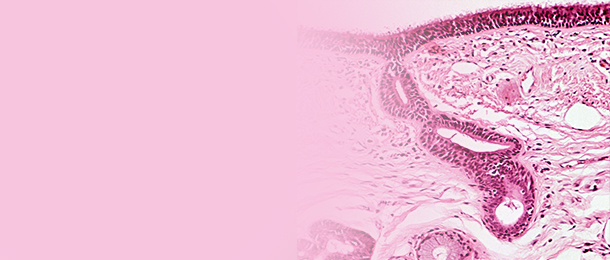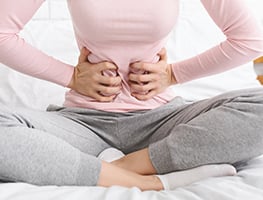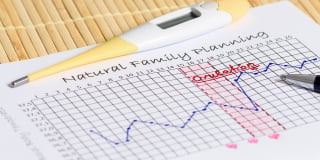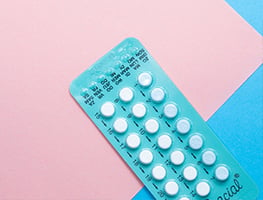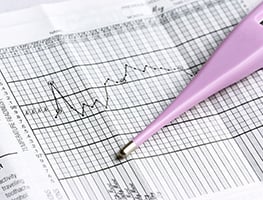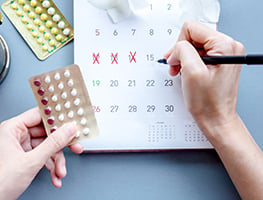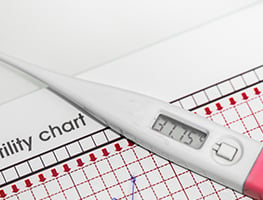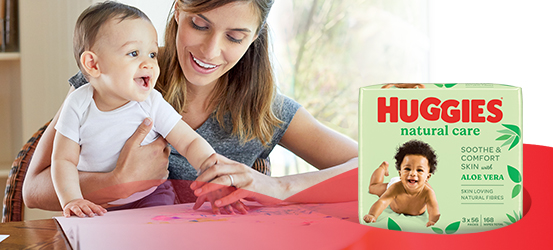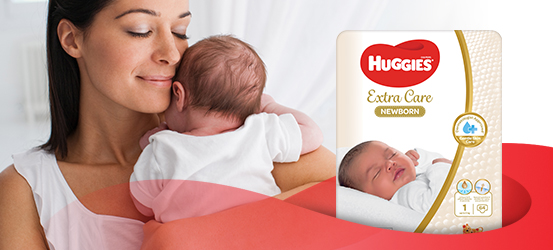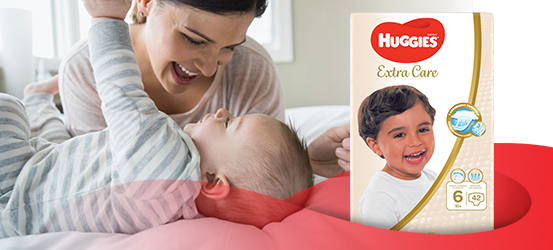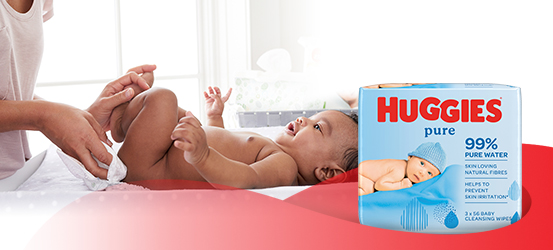Many women get confused by the ‘Day 14’ terminology and assume that ovulation occurs fourteen days after menstruation has ended, when (assuming an ‘average’ 5 days of menstruation) it is more likely to be around nine days after menstruation has finished.
It is usually around fourteen days after ovulation, before menstruation starts again – however very few women have an ‘average’ cycle. The time after ovulation is known as the ‘luteal phase’ and is the longest-lasting phase of the menstrual cycle.
Can you still get pregnant after ovulation?
It is only possible to get pregnant for a short period of time after ovulation.
After ovulation – when the egg is released from the follicle – there is a period of between 12 and 48 hours when the egg is available to be fertilised by a mature sperm.
Sperm can last for up to five days inside a woman’s body, sustained by the cervical mucus – so often, just after ovulation, sperm already waiting in the fallopian tubes will fertilise the egg after it has just been released.
Healthy, active sperm take around six hours after ejaculation to swim through the cervix and the womb into the fallopian tube to meet a waiting egg, so for one to two days after ovulation, it is still possible to fall pregnant.
Can you ovulate twice in one cycle?
In any one menstrual cycle, there will be just one fertile period. Follicle stimulating hormone (FSH) stimulates the growth of ovarian follicles in the ovary before the release of an egg at ovulation.
Because ovulation is triggered by a particular combination of hormones that rises and falls over the normal menstrual cycle, eggs can only be released from the ovaries during the 24-hour period when the ovulation-promoting hormones are at their peak.
A pregnancy with fraternal twins results from two eggs being released from two different follicles, within the same 24-hour period. Twins occur once in every 76 births.
Advances in ultrasound technology have led to research into the vanishing twin syndrome. It is now thought that it occurs in up to 30% of multifoetal pregnancies. It involves the very early fertilisation of more than one egg, but the second embryo will not survive for more than a few weeks after ovulation. If the embryo does not survive, it is reabsorbed by the body.
After ovulation, hormone levels decline and you must go through a feedback cycle, which triggers menstruation before you ovulate again.
What happens immediately after ovulation?
For the next eight days or so after ovulation, the same events occur in your body whether the egg has been fertilised or not.
The follicle which released the egg grows larger and turns into a gland-like structure called the ‘corpus luteum.’ After this, it then starts to produce the hormone progesterone, which causes the lining of the womb (the endometrium) to grow thick and become covered with mucus that is produced by glands within the endometrium.
What happens after ovulation – if you are not pregnant?
After ovulation, if you are not pregnant, within 48 hours, the egg moves along the fallopian tubes, disintegrates and is absorbed back into the body.
The corpus luteum survives and continues to produce progesterone for around 12 to 14 days. After this, it dies (unless it receives the hCG hormone released from an embryo).
The level of progesterone in the body drops and the endometrium responds by shutting off its arteries, preventing blood from flowing to and from the surface of the uterine lining.
The blood that is already in the lining then pools lower in the womb and the mucous-covered uterine lining, deprived of oxygen, dies back, the blood and lining seep into the vagina, so menstruation occurs and the cycle begins again.
After ovulation and until menstruation, your basal body temperature remains about 0.5 °C higher. Your cervical mucus becomes less slippery and more sticky or creamy in consistency.
What happens after ovulation – if you are pregnant?
The moment that one of the millions of sperm enters the outer surface of the egg, the egg’s coating changes so no other sperm can enter, the sperm and egg combine and form a ‘zygote.’
After this, the zygote takes around five days to travel down the fallopian tube, with cells dividing and eventually forming a ‘blastocyst.’
Around eight to ten days after fertilisation, the blastocyst implants into the wall of the womb.
Before implantation, there’s not a lot of change going on in your body, which behaves just as it would if you weren’t pregnant.
But after ovulation and then implantation, the fun begins. Sometimes there is a slight spotting or bleeding just after implantation – which some women mistake for a period.
But when the blastocyst attaches to the endometrium, becoming an embryo, various hormones are released, which thicken the endometrium and seal the cervix with a plug of mucous.
The embryo and placenta develop separately. After implantation, the placenta produces the hormone human chorionic gonadotropin (hCG). Within a few days, the level of hCG is able to be detected in urine, using a pregnancy test.

